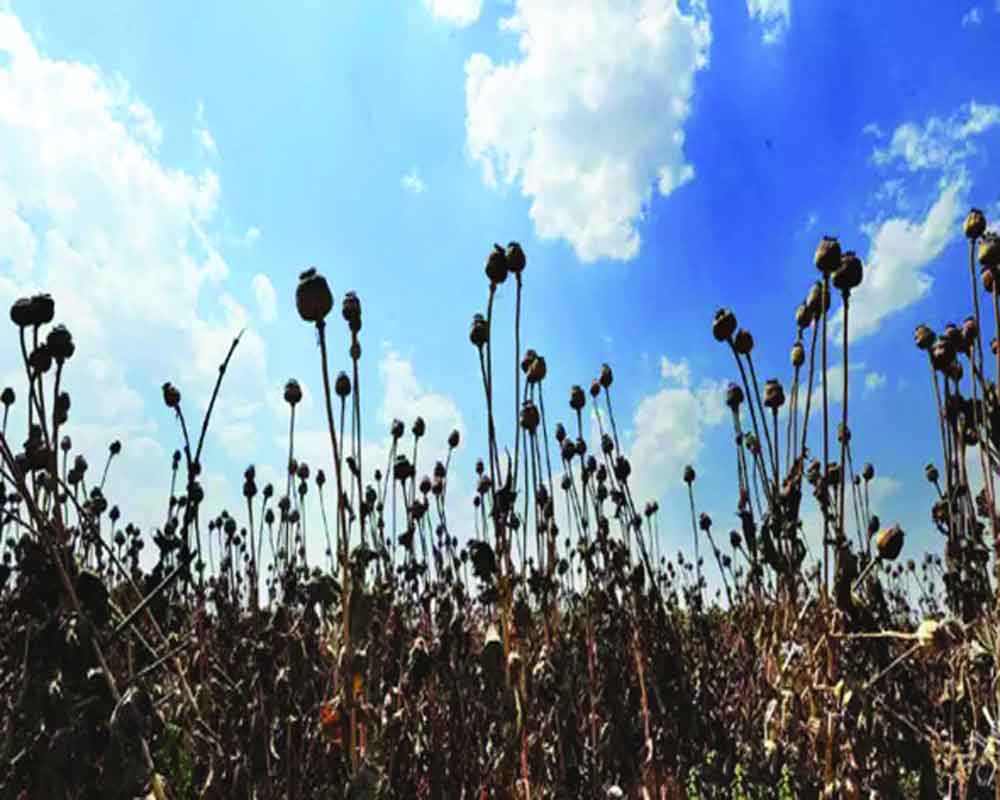Opium cultivators, who were de-licensed or banned between crop year 1999 and 2017, can once again undertake opium poppy farming, subject to clearance from the Narcotics Commissioners.
The Centre’s move is aimed at increasing the country’s opium production. Opium is the main source of alkaloids such as morphine, codeine and the baine, used in anti-addiction therapies and medicines that treat extreme pain, such as in cancer patients.
The Centre grants license to farmers to grow opium in only three States: Rajasthan, Madhya Pradesh and Uttar Pradesh. The Ministry of Finance has issued guidelines for grant of license for cultivation of opium poppy for 2019-20 that begins on October 1 and ends on September 30 next year. The average yield of opium cultivators has been fixed at 56 kg per hectare in Madhya Pradesh and Rajasthan and not less than 52 kg in Uttar Pradesh.
As per guidelines, to retain license for opium cultivation, an average yield of minimum qualifying yield (MQY)-Morphine is fixed of 4.5 kg per hectare in these States.
As per the notification, all eligible cultivators will be issued a license for 10 acre.
However, cultivators whose yield last year was 58 kg per hectare and above will get a license for 15 acre, those with average yields of 60 kg per hectare and above will get 20 acre and those with 65 kg per hectare and above will be able to grow opium over 25 acre.
“The Central Government has notified the general conditions for grant of license for cultivation of opium poppy on account of the Central Government during the opium crop year commencing on the October 1, 2019 and ending with September 30, 2020,” the Ministry of Finance notification said.
The cultivators who get their opium poppy crop ploughed back in excess of 50 per cent of total of areas cultivated during the crop years 2018-19, 2019-20 and 2020-21 may not be eligible for a license to cultivate opium poppy in 2021-22.
According to the Central Bureau of Narcotics, the cultivated area under opium poppy has declined from 26,000 hectare to 3,000 hectare in the past 10 years. As many as 30,000 licenses were issued in three States in 2018.
“The Government would consider issuing more licenses to farmers this year with good performance in the past in light of proposed augmentation of capacity of the Government Opium and Alkaloid Works, adequate demand of opium for domestic and export purposes, provided the concerned farmers have satisfied the minimum qualifying yield (MQY) and other conditions of the licensing policy of the relevant year,” officials said.
Areas known for opium cultivations are Pratapgarh, Udaipur, Bhilwara, Chittorgarh and Jhalawar in Rajasthan; Barabanki, Bareilly, Lucknow, Faizabad, Shahjahanpur, Gazhipur, Mau, Budaun in Uttar Pradesh; Mandsaur, Ratlam, Neemuch, Agar Malwa, Ujjain, Jhabua and Rajgarh in Madhya Pradesh.
According to the United Nations Office of Drugs and Crime (UNODC) report, India alone accounted for six per cent of the world’s cannabis herb (ganja) seizures in 2016 (nearly 300 tonnes), and reported seizing even higher quantities in 2017 (353 tonnes) - a 20 per cent increase compared to 2016.
























